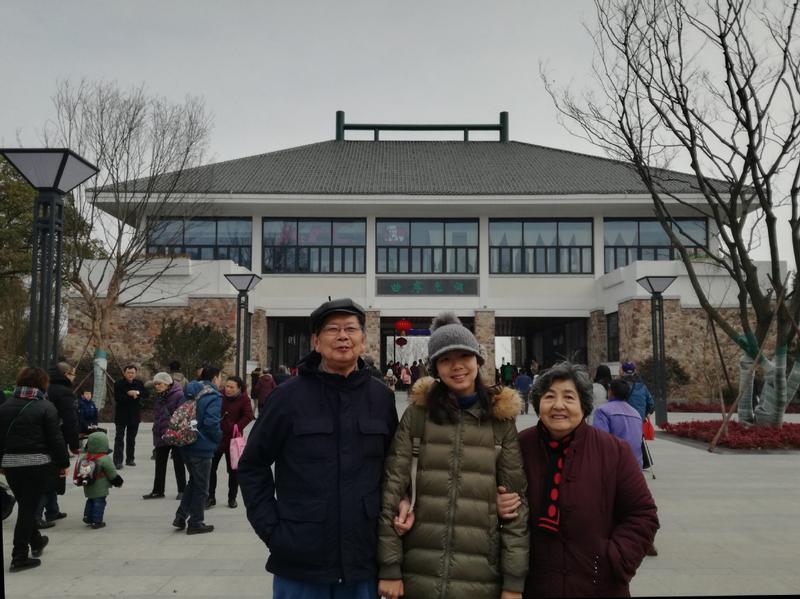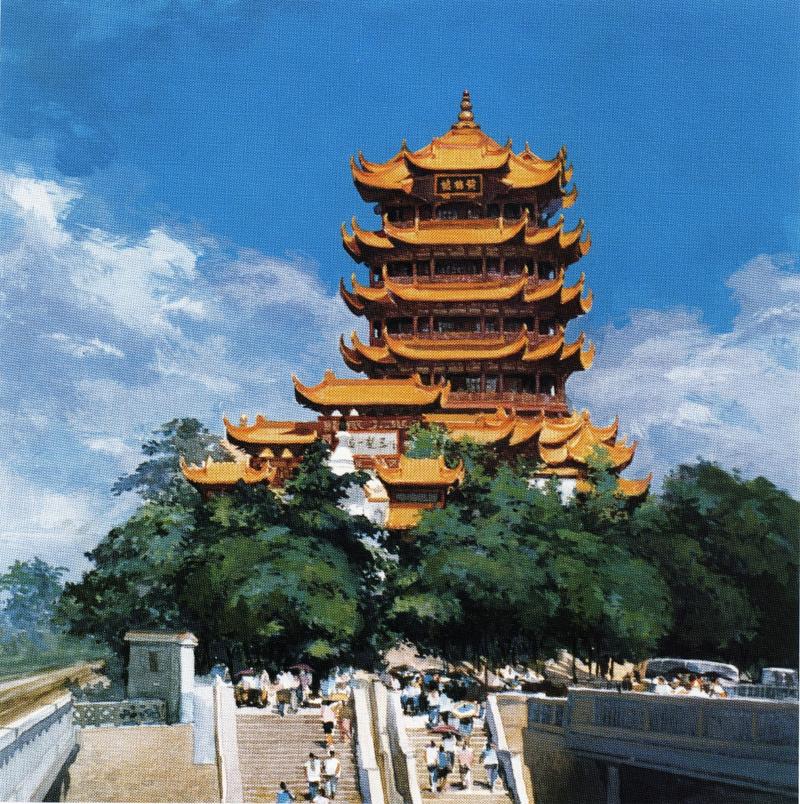 Xiang, his granddaughter and wife at the East Lake Greenway in Wuhan in 2017. (PHOTO / CHINA DAILY)
Xiang, his granddaughter and wife at the East Lake Greenway in Wuhan in 2017. (PHOTO / CHINA DAILY)
In 1978, little-known architect Xiang Xinran was given the job opportunity of a lifetime when he was asked to reconstruct the historic Yellow Crane Tower in Wuhan, Hubei province.
Xiang Xinran, who went on to become one of the country's leading architects, died of stomach cancer last month age 81
Xiang, then 38, had graduated from Tsinghua University and worked at the Central-South Architectural Design Institute. He was asked to help a senior colleague draw up design sketches for a new tower to commemorate the original one, which no longer existed.
Xiang drew up an alternative plan to his colleague's based on how the tower would have looked during the Qing Dynasty (1644-1911).
To his company's surprise, officials thought Xiang's design stood out from the pack of proposals they had received from leading architectural firms.
In a 2017 article published in CSADI's magazine, Xiang said it was the "blessing of his lifetime" but also carried "great pressure". At a coordination meeting before the construction work began, officials questioned Xiang on whether he was capable of finishing the task. He told them if he couldn't,"I will jump into the Yangtze River!"
ALSO READ: Country tries to solve challenge of the ages
Xiang, who went on to become one of the country's leading architects, died of stomach cancer last month age 81. He is survived by his wife and two sons.
His contributions to the tower, restoration of historic buildings, insistence on professionalism and enthusiasm and dedication to design, even in old age, inspired generations of architects, according to officials and former peers.
 A painting done by Xiang of the tower after the completion of its reconstruction in 1985. (PHOTO PROVIDED TO CHINA DAILY)
A painting done by Xiang of the tower after the completion of its reconstruction in 1985. (PHOTO PROVIDED TO CHINA DAILY)
Towering figure
The original Yellow Crane Tower was built in 223 AD during the Three Kingdoms (220-280) for military use. In the following dynasties, it became a travel destination for intellectuals and was written about in many ancient poems.
It was destroyed seven times, due to military conflicts or accidents, and restored 10 times during the Ming (1368-1644) and Qing dynasties. The last restoration of the tower was in 1868, but it was again destroyed in 1884.
Almost a century later, the Wuhan government decided to build a new tower on a different site to the original. Their intention was to keep the history of the tower alive and preserve the city's culture.
Since reopening in June 1985, the five-story 51.4-meter-high building located on Sheshan Mountain above the Yangtze River has been designated a national 5A tourism attraction.
Reconstruction work began in October 1981 and to fulfill his bold promise, Xiang worked day and night. Without a computer, he drew around 150 sketches by hand, which detailed construction work, interior design and landscaping.
He visited libraries and experts to absorb as much knowledge as possible about the architectural style he wanted to recreate."Exhausted from working overtime, I sometimes nodded off on the bus and missed the station," he said in the article. At 1.8 meters tall, his weight dropped to 60 kilograms at one point due to the tough work schedule.
In September 1983, the roofs of the tower were in place and Xiang moved into a 12-square-meter room at the construction site to speed the workflow. The room contained a bed, office table and drawing boards. One of his son's, Xiang Shang, remembers visiting the construction site when he was a small boy."The working environment was harsh," he said. "Father put all his energy into it and mother took over all the duties at home."
Growing pride
Although shrouded in scaffolding, the building, which was visible from the busy Yangtze River Bridge, had already created a stir among locals. Every evening after dinner, Xiang Xinran walked round the foothills of the mountain. One humid summer night, he overheard a local dressed in shorts and carrying a fan talking about the tower with an out-of-town businessman. "He sounded so proud," Xiang Xinran said.
During the inauguration ceremony for the tower in 1985, he said he wanted to cry out "to release all of the pressure"."I was honored to be able to bring back its glory and make history touchable," Xiang Xinran said.
The tower receives about 4 million visits a year, and has won a design award from the Architectural Society of China. Xiang Xinran was selected as a deputy to the seventh National People's Congress, China's top legislature, in 1988 for his contributions to reconstruction of the tower. He published two books on his work, in 2014 and 2017, which included his hand drawings and paintings of the tower plus stories about the design work.
 Xiang Xinran at the construction site of the Yellow Crane Tower in Wuhan, Hubei province, in 1983. (PHOTO PROVIDED TO CHINA DAILY)
Xiang Xinran at the construction site of the Yellow Crane Tower in Wuhan, Hubei province, in 1983. (PHOTO PROVIDED TO CHINA DAILY)
Mentor's legacy
Encouraged by his father, Xiang Shang majored in architecture at college. After graduating in 1999, he worked as an architect in Shanghai."He cared about my work, asking about my projects all the time as if he was my client," he joked.
Xiang Xinran's passion for architecture didn't stop after his retirement. He worked on projects including the Hubei Provincial Museum, the East Lake Greenway in Wuhan and the rebuilding of the Xunyang Tower in Jiujiang, Jiangxi province.
Sheng Nieming, deputy chief engineer of the Wuhan Institute of Landscape Architectural Design, said in 2016 they invited Xiang Xinran to work as the design counselor for East Lake Greenway buildings.
READ MORE: Returnee to Tibet feels at home
"His eyesight was poor, but he insisted on drawing sketches by hand at home. We later transformed the drawings into computer graphics," he said, adding Xiang Xinran often visited the construction site.
Li Bing, assistant general manager of the institute, said they would receive phone calls from Xiang Xinran at 6 am or midnight.
"His work was done after giving advice, but he followed all the steps. He was respectful," he said.


